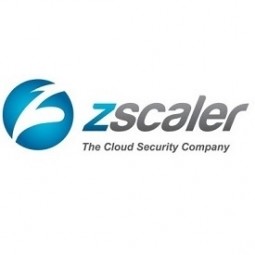Technology Category
- Infrastructure as a Service (IaaS) - Backup & Recovery
- Infrastructure as a Service (IaaS) - Cloud Databases
Applicable Industries
- Cement
- National Security & Defense
Use Cases
- Supply Chain Visibility
- Tamper Detection
About The Customer
Guild Mortgage is a residential real estate mortgage company headquartered in San Diego, California. Founded in 1960, the company has grown significantly over the years, expanding to over 250 branch and satellite offices in 27 states and establishing banking relationships in 48 states. The company has experienced a 16-fold growth since 2007, expanding its workforce from 400 to over 4,000 employees through acquisitions and new hires. Guild Mortgage's rapid growth and expansion necessitated a robust and scalable security strategy to protect its operations and data.
The Challenge
Guild Mortgage, a residential real estate mortgage company, experienced exponential growth since its inception in 1960. With over 250 branch and satellite offices in 27 states and banking relationships in 48 states, the company's workforce grew from 400 to over 4,000 employees. This rapid expansion necessitated a robust security strategy to support the growing business needs. Three years ago, a security team was formed to identify vulnerabilities and build a mitigation strategy. While some security technologies were in place for in-office workers, the team found that users were not as protected when working remotely. The team aimed to implement a state-of-the-art security program that could support the evolving business needs driven by their aggressive growth strategy. They needed a cloud-based solution that could provide SSL decryption and inspection, an intrusion prevention system (IPS), and data loss prevention (DLP) to enable users to work from anywhere.
The Solution
After conducting a gap analysis and researching industry standards, the security team at Guild Mortgage decided on Zscaler's cloud-delivered Internet Access (ZIA) and Private Access (ZPA) solutions. These solutions were added to the company-wide security framework due to their ease of use and varied add-on features. Zscaler's solutions allowed the team to gain visibility and present data and real-time evidence of security threats to the leadership team, thereby emphasizing the importance of security for their growing organization. Zscaler helped Guild Mortgage identify and block several zero-day and ransomware attacks and brought to light phishing attempts that hadn't been visible before. The company is now focusing on implementing a full data protection program delivered from the cloud, with Zscaler providing the necessary visibility to determine what needs to be protected and how to mature their data protection program.
Operational Impact
Quantitative Benefit

Case Study missing?
Start adding your own!
Register with your work email and create a new case study profile for your business.
Related Case Studies.

Case Study
System 800xA at Indian Cement Plants
Chettinad Cement recognized that further efficiencies could be achieved in its cement manufacturing process. It looked to investing in comprehensive operational and control technologies to manage and derive productivity and energy efficiency gains from the assets on Line 2, their second plant in India.

Case Study
Data Capture for Afghanistan Forces
Electronic equipments on the field of Afghanistan provided information on the status of the vehicle and to identify potential threats surrounding it to the British Force. The monitoring and interpretation of this data requires robust and sophisticated digitization for data capture and communication.

Case Study
Digital Transformation of Atlanta Grout & Tile: An IoT Case Study
Atlanta Grout & Tile, a Tile, Stone & Grout restoration company based in Woodstock, Georgia, was facing challenges with its traditional business model. Despite steady growth over the years, the company was falling behind the web revolution and missing out on the opportunity to tap into a new consumer base. They were using independent software from different vendors for each of their department information and workforce management. This resulted in a lot of manual work on excel and the need to export/import data between different systems. This not only increased overhead costs but also slowed down their response to clients. The company also had to prepare numerous reports manually and lacked access to customer trends for effective business decision-making.
Case Study
Enhancing Security and Compliance in Remitly's Global Money Transfer Service with Fastly
Remitly, an online remittance service, was faced with the challenge of securing its proprietary global transfer network. The company needed a security solution that could meet PCI requirements and protect customers' sensitive transactions through its mobile application. The solution had to be capable of defending against new and emerging attack types without impacting performance. Remitly also had to deal with irregular traffic patterns, such as a sudden spike in account transfers from a small network segment on the Pacific coastline of South America. The company needed to determine in real time whether such traffic indicated an attack or valid requests. A traditional web application firewall (WAF) would not be able to distinguish this traffic, potentially leading to customer frustration if the IP was blacklisted.

Case Study
Major Aerospace Company Automates Asset Management
The O&M division of an aerospace and global security company was using spreadsheets to manually track more than 3,000 assets assigned to students and staff. Maintaining audit trails for this high volume of equipment became increasingly time-consuming and challenging. The chore involved knowing precisely what equipment was on hand, what had been issued, its location and the name of the custodial owner of each item. Every aspect of this task was carried owner of each item. Every aspect of this task was carried out by individuals with spreadsheets. Manually documenting the full lifecycle of each asset added to the burden. This included tracking maintenance requirements and records, incidents and damages, repairs, calibrations, depreciation, and end-of-life data.








